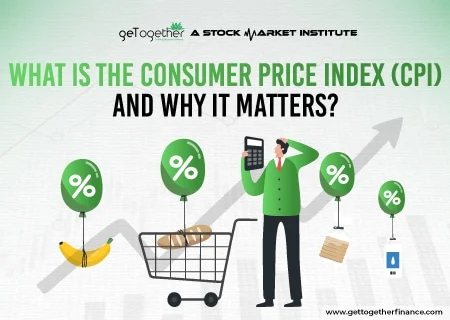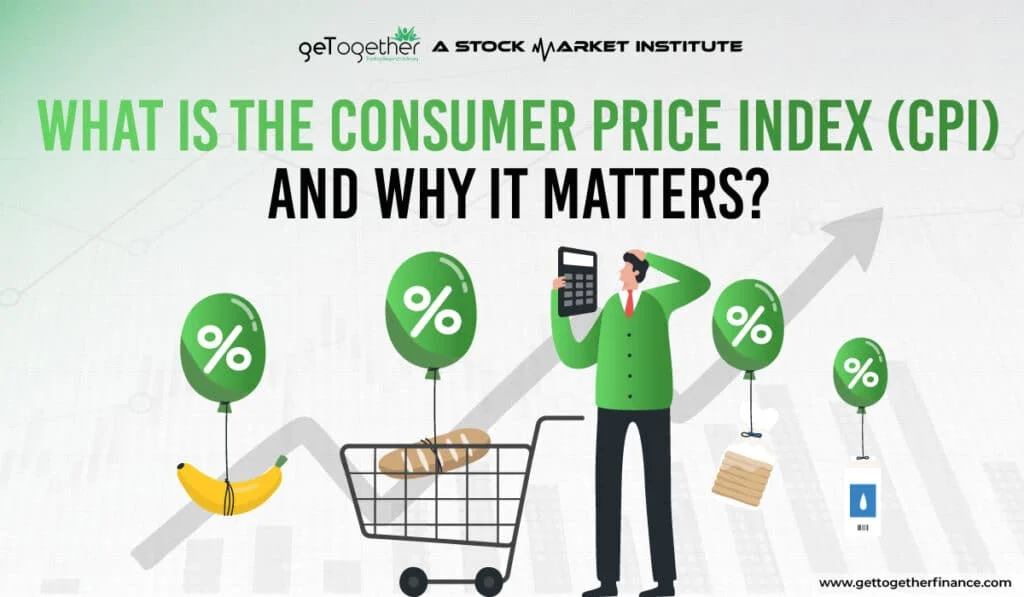What Is the Consumer Price Index (CPI) and Why It Matters?


Table of Contents
ToggleIntroduction
We loosely use the term inflation in our daily lives to talk about the rising prices of goods and services. When the prices of goods rise, it also brings down the purchasing power of an economy. So, the government uses macroeconomic tools to control inflation so that the currency doesn’t lose its value and goods and services are affordable for consumers.
Consumer price index (CPI) is the key economic indicator used to measure retail inflation in India. While the industrial level inflation is assessed using the Wholesale Price Index (WPI), the government’s focus is to control the retail inflation. Hence, CPI is the primary inflation measurement tool.
In this blog, we explore the consumer price index (CPI), how it is measured, the impact of consumer price index inflation, and how it affects the decisions of policymakers, businesses, and consumers.
What is Consumer Price Index (CPI)?

Every year during the Union budget, our Finance Minister reveals the past year’s inflation (FY 2024-25 was 4.6%) and the targets for the next year. But have you wondered how the government arrives at these figures of inflation? The consumer price index (CPI) is a tool used by the National Statistics Organisation (NSO) and the Ministry of Statistics and Programme Implementation (MoSPI) to measure retail inflation.
The meaning of CPI is related to the increase or decrease in the general cost of living. It shows the average change in prices of a basket of consumer goods and services in both rural and urban centres over time. Here are the components and their official weightage in the consumer price index inflation:
| Component Name | Weightage |
| Food and Beverages | 14.259% |
| Housing | 42.363% |
| Apparel | 2.458% |
| Transportation | 18.182% |
| Medical Care | 8.487% |
| Recreation | 5.108% |
| Education and Communication | 6.406% |
| Other goods and services | 2.737% |
4 separate Consumer Price Indices are calculated in India:
- CPI for Industrial Workers
- CPI for Agricultural Labourers
- CPI for Rural Labourers
- CPI for Urban Non-Manual Employees.
A rising CPI shows inflation, while a fall in CPI (rare) shows deflation. As per financial experts, moderate inflation is healthy for the economy, whereas deflation can be fatal.
How is CPI Calculated?

Now that you know what is CPI, it is time to understand how it is calculated. Let’s try to understand the CPI formula in this section:
| Consumer Price Index=Cost of Market Basket in Current YearCost of Market Basket in Base Year100 |
Just by looking at the CPI formula, you can understand one thing. For this formula to be fruitful, the most important thing is the base year market basket.
The base year is decided by MoSPI. Currently, the base year is 2012, but 2024 will replace it as the new base year from FY 26 to aid better calculations and smooth decision-making.
Let’s now look at the step-by-step calculation of the consumer price index:
Step 1: Selecting the Basket of Goods and Services
The statisticians choose a sample that represents the common consumer purchases.
Step 2: Collecting the Price Data
Once the items in the basket are finalized, each of their prices is gathered from various locations, including urban areas, marketplaces, retail shops, etc.
Step 3: Assigning the Weights
Based on the share in total consumer expenditure, each item is assigned a weightage. However, the government can use a fixed weightage or change it from time to time as per the shift in consumer demand.
Step 4: Price Indexing
At this stage, the cost of the current basket is compared to the cost of the base year basket using the CPI formula to derive the index.
Example of Consumer Price Index
Let’s take a look at an example to understand it better. Suppose the value of the CPI basket in the base year 2012 was 450, and in the current year it is 750. What will be the consumer price index?
| Consumer Price Index=750450100=166.67 |
Now, suppose the value of the current year basket becomes 800 in the following year. The new consumer price index will be:
| Consumer Price Index=800450100=177.78 |
With this data, you can compare the two values and work out the consumer price index inflation year-on-year. However, you can also infer that the inflation from the base year has increased by 66.67% and 77.78%, respectively, given that the base year CPI is set to be 100.
Read More – Understanding Earning Per Share ( EPS )
CPI vs. Inflation

People often end up confusing CPI and inflation. However, they are different. While the consumer price index is an inflation measurement tool, it doesn’t directly give the inflation number. Rather, the rate of change in CPI is a measure of inflation. When CPI increases, it is an indication of inflation in the economy. Having said that, inflation is not limited to the consumer price index. Here are other metrics that inflation includes:
- Wholesale Price Index (WPI): Also called the Producer Price Index (PPI), is a measure of the changes in selling price for local producers and wholesalers.
- Core Inflation: Food items and fuel are generally price-volatile. Hence, core inflation measures the other consumer goods and services apart from these 2 to give a stable view on inflation.
Limitations of CPI

Inspite of the uses and popularity of the consumer price index, it doesn’t come without its limitations. These include:
- Substitution bias: CPI assumes a fixed consumer behaviour. It means the consumers buy the same items and in the same quantities repeatedly over time. But, in reality, we all know that this is not true. The consumer preferences change, their go-to alternatives change due to inflation, and so on.
- Doesn’t reflect individual consumption: While the actual consumption differs depending on demographics, regions, and consumer preferences, CPI averages it out. Hence, the individual consumption patterns remain unknown with the consumer price index.
- Delayed data collection: CPI is a lagging indicator. This means it takes time to collect the actual data, and there is a lag between data collection and its reflection in the CPI numbers. Hence, a real-time representation is not possible with it.
- Product and quality changes: Slightest changes in the market, like the introduction of a new product or quality improvements, take time to reflect in the CPI, making it unreliable as the true measure of price changes.
CPI Around the World

Consumer price index is not just limited to India, but is used as a metric by countries around the world for inflation measurement. Each country has a separate organization that develops a method to track the CPI. For example:
- Ministry of Statistics and Programme Implementation (MoSPI): India
- Bureau of Labor Statistics (BLS): USA
- Office for National Statistics (ONS): UK
- Australian Bureau of Statistics (ABS): Australia
The CPI composition can differ between countries depending on various factors, including:
- The weightage and items in the basket
- Consumer demands and behaviour
- Cost of living
- Climate and environmental differences
- Cultural variations
Conclusion
The consumer price index (CPI) is a key economic indicator and plays a vital role in assessing the health of the economy, wage revisions, and influencing policy decisions. Whether the purpose is inflation measurement or planning budgets, understanding the meaning of CPI can make life easier for you. If you want to plan your finances like a pro, you should keep a track of the consumer price index inflation numbers and trends on the news.



 Instagram
Instagram
